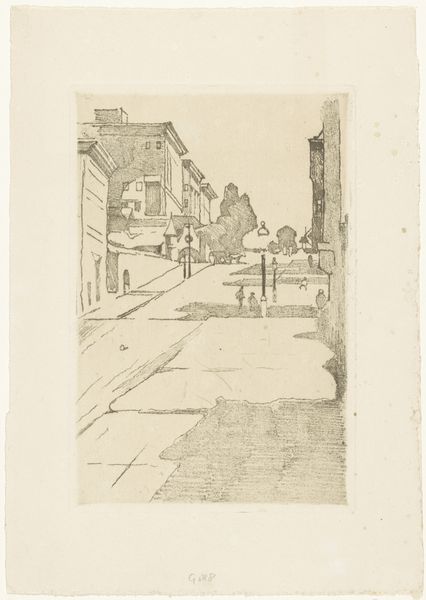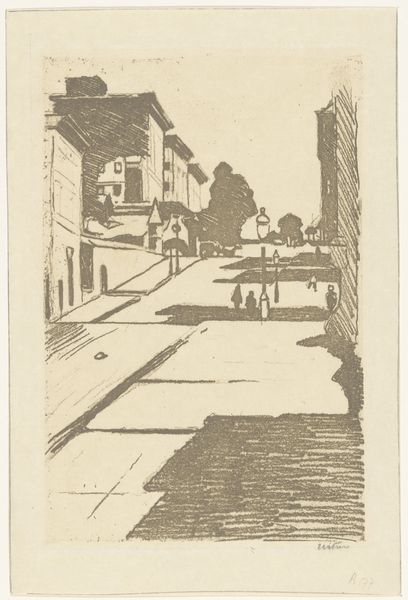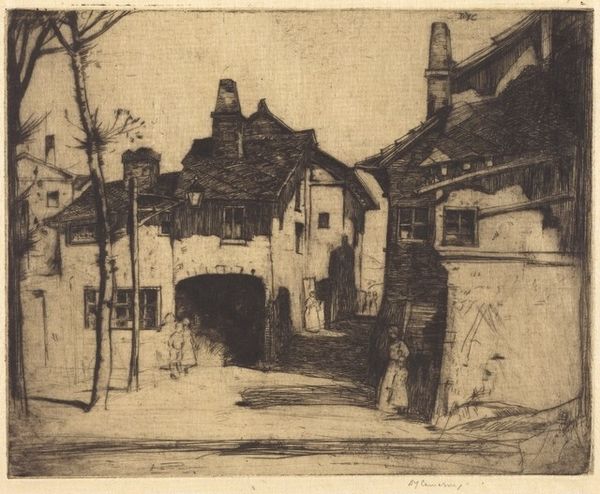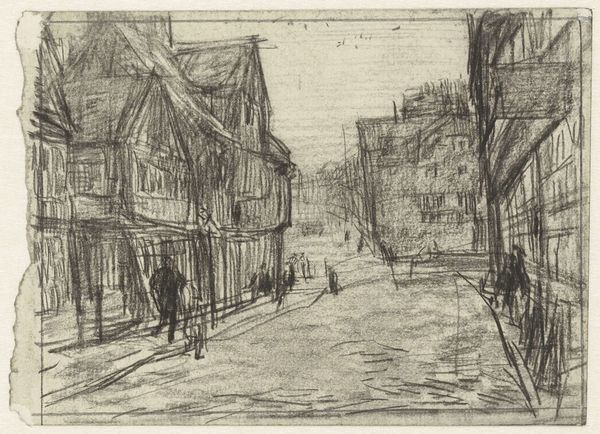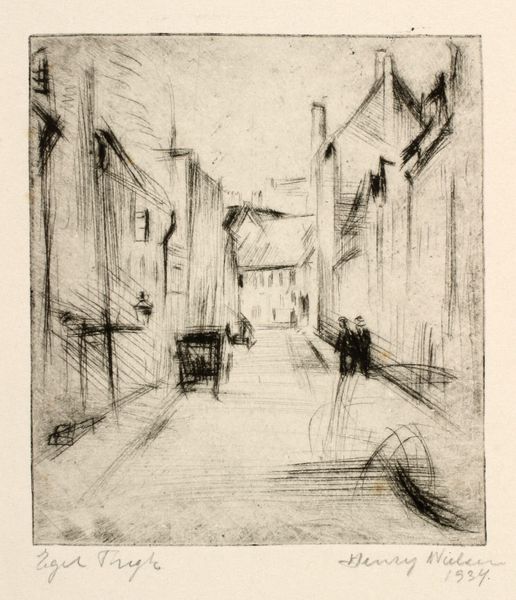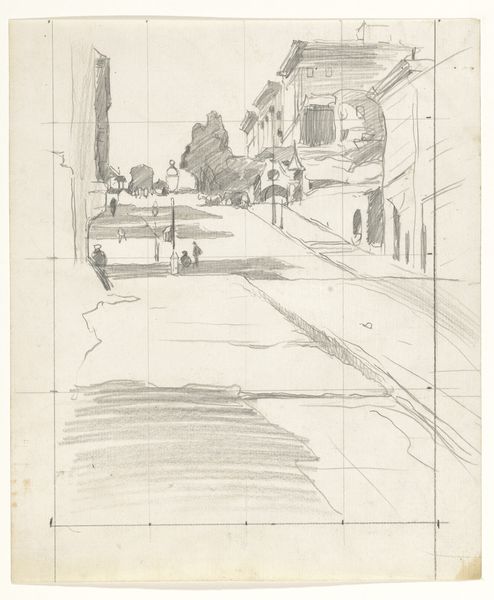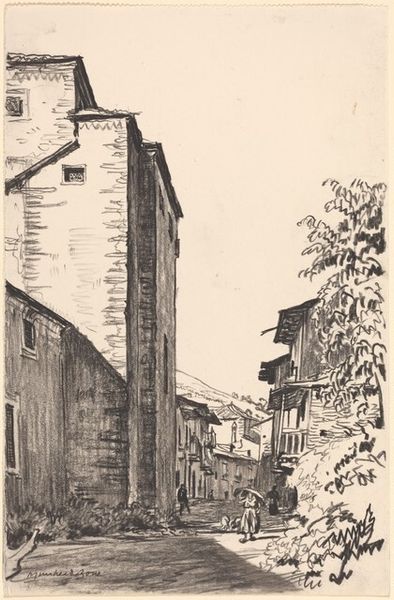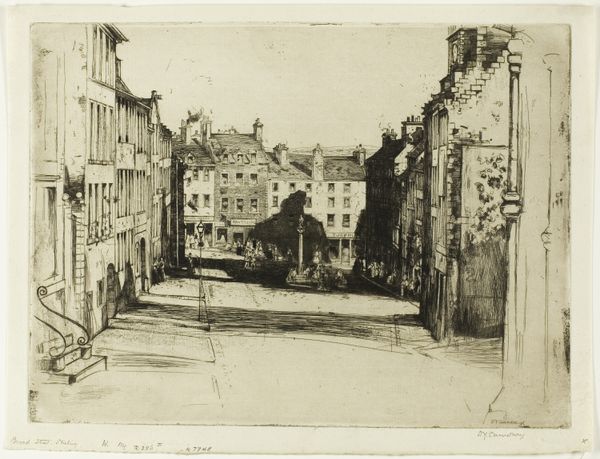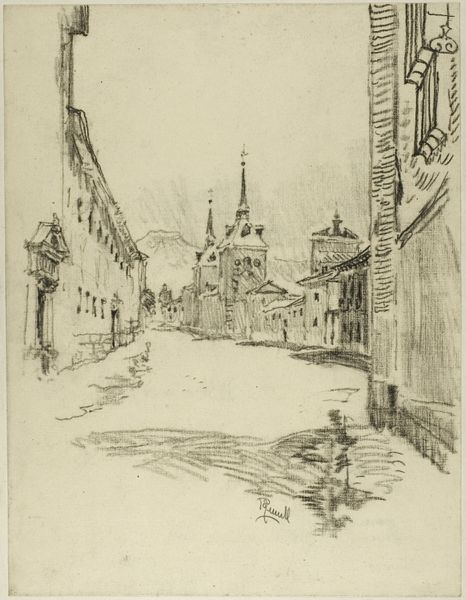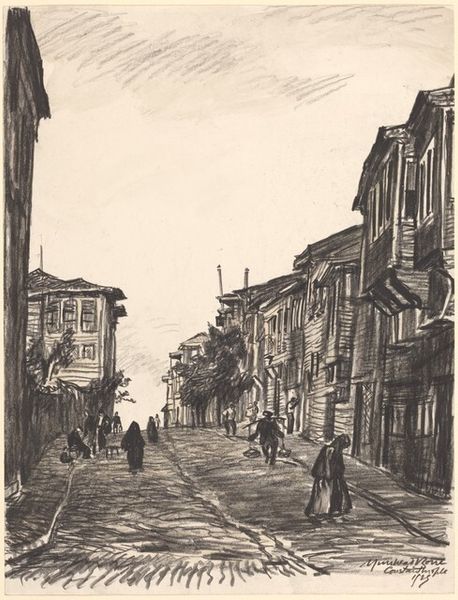
print, etching
# print
#
etching
#
landscape
#
etching
#
german-expressionism
#
expressionism
#
cityscape
Dimensions: plate: 24 × 28.5 cm (9 7/16 × 11 1/4 in.) sheet: 34 × 46.3 cm (13 3/8 × 18 1/4 in.)
Copyright: National Gallery of Art: CC0 1.0
Curator: We’re now observing "Gostritz," an etching by Bernhard Kretzschmar, created in 1924. Editor: There's a stark melancholy that emanates from this cityscape; the tonal variations alone lend it a bleak air. Curator: Indeed. Kretzschmar was part of the German Expressionist movement, and this work exemplifies that sensibility. Note the aquatint process used for tonal variations. Editor: The very labor involved—the acid-biting into the metal plate, the wiping of the ink, speaks to a certain grim determination mirrored in the desolate urban landscape it depicts. Etching, with its chemical processes, provides an intriguing metaphor for societal decay, don't you think? Curator: Semiotically, the receding lines of the street draw the eye into an almost vanishing point, symbolizing perhaps, the fading hopes of the Weimar Republic? Editor: Possibly, but I am equally concerned with the material culture being represented here. Those telegraph poles bisecting the sky speak volumes about communication infrastructure. Consider also the smoke plumes rising; there’s a commentary on industry and environment intertwined. What was the air like then, what materials were being consumed? Curator: I concede. There's a palpable tension in the formal contrasts between the linear precision of the buildings and the organic, almost chaotic etching of the snow and smoke. It encapsulates an inner and outer turmoil, yes? Editor: Precisely! It reveals a fraught interaction between people, labor and materials. Even now it elicits contemplation. Curator: Agreed, a work dense in symbolic and emotional resonance. Editor: The process of making something, leaves a mark.
Comments
No comments
Be the first to comment and join the conversation on the ultimate creative platform.

